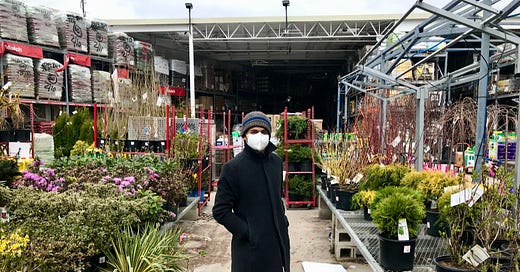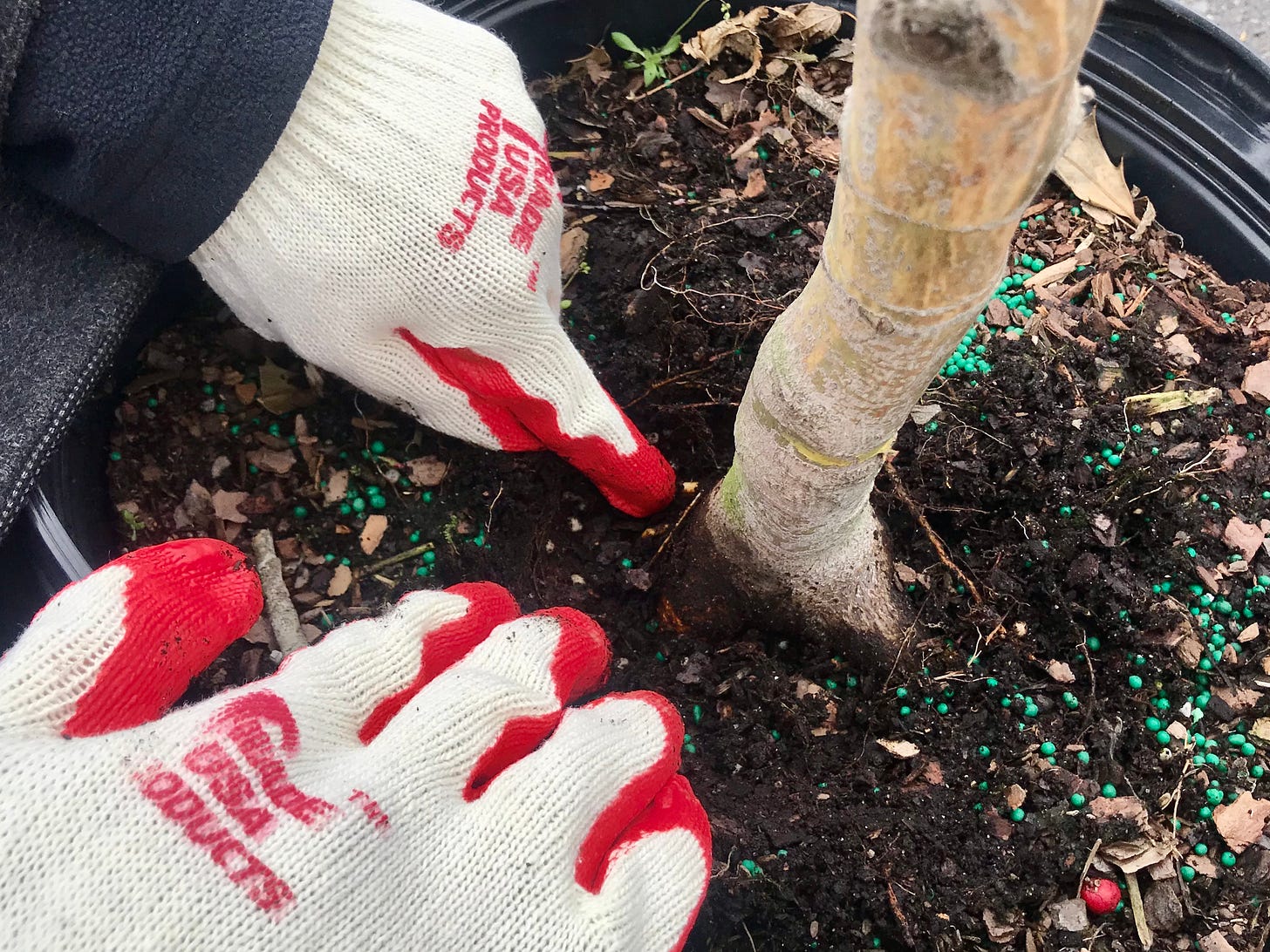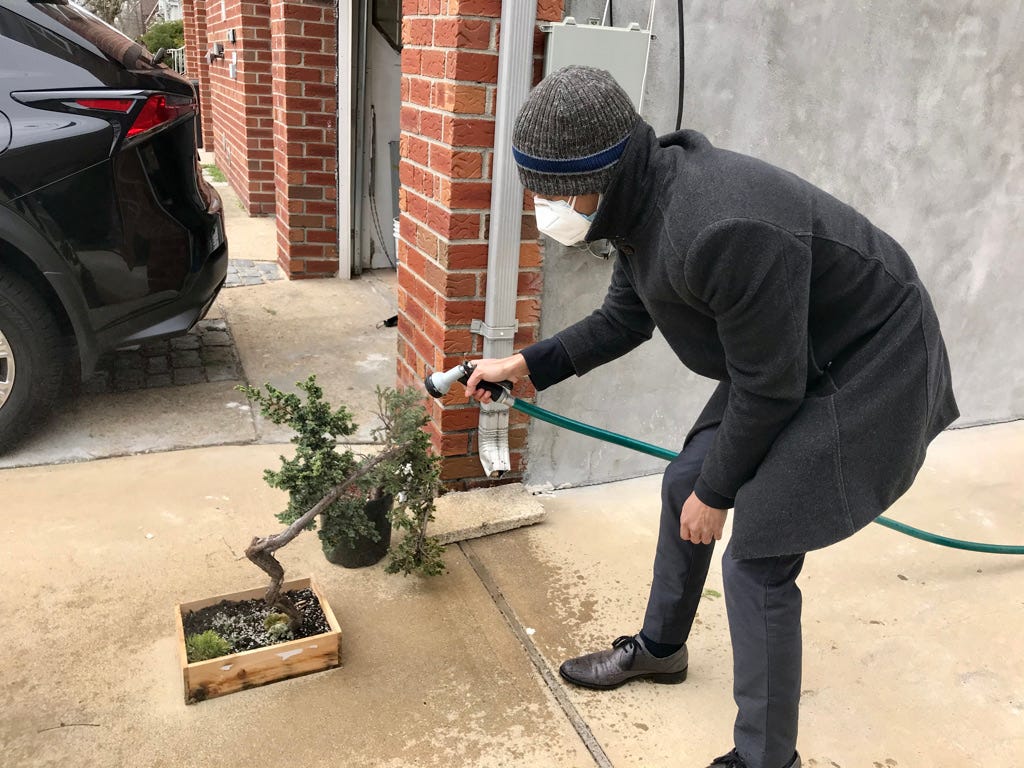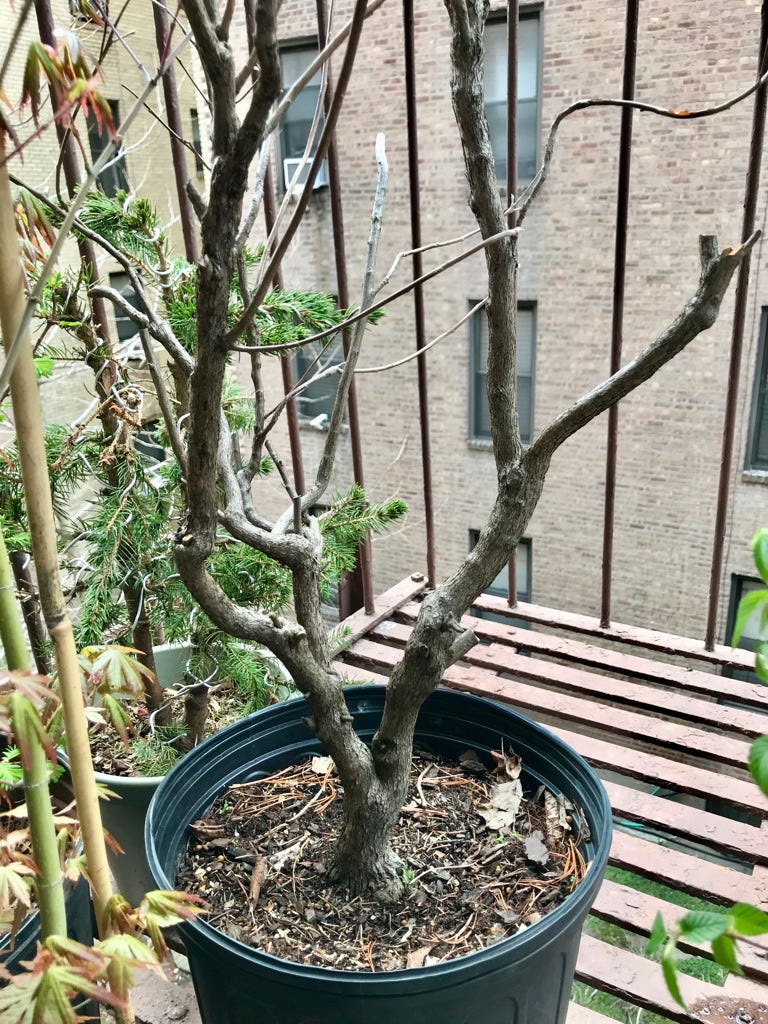Gone tree hunting
A magical journey to the land of garden centers and Italian deli guys in cargo shorts: Long Island.
This is my buddy Nissan. If you’re looking to repair a broken ceramic heirloom with kintsugi—the Japanese art of bonding broken pots and dishes with urushi lacquer and gold dust—he’s your man. He, like me, is also really into tea, but unlike me, Nissan is the kind of person to hike upstate until he finds a mountain spring, then fill up some carboys to brew back home in Queens. Watch one of his meditative videos about making tea. You’ll get it.
Suffice it to say, I wasn’t surprised to learn that he’s also been doing bonsai for about 10 years. I’ve since conscripted him into service as a tree rabbi, and now we text about fertilizer.
Last week he texted me cryptically, “you wanna go on a depot run!!?” Home Depot, he meant, or as my stepfather calls it, Home Despot. Nissan wanted to go tree hunting.
The fastest way to bonsai is to buy a developed tree from a professional seller. That’s easy and expensive. Like I mentioned a couple weeks ago, bonsai is as much about the journey as the destination. So you have three other, harder options: grow a seedling and hope you live long enough to see it become a bonsai, transplant a wild tree from nature and hope you didn’t just kill a precious piece of God’s creation, or get nursery stock at a garden center.
Nissan’s typical depot run is a mad dash across Queens and Long Island to three Home Depot locations and three mom-and-pop nurseries. During planting season, he says, he likes to go two or three times a week to keep an eye out for new material. I’ve been Nissan’s passenger in a car before, but have never seen him drive with such white-knuckled determination as on our depot run.
At our first stop, he sprints to the landscaping section to check if a hinoki cypress he’s been eyeing is still there. Then he skips down a line of garden trees, digging into their pots to expose their nebari, the base of the trunk that flares out to the roots. A nebari gives a tree a crucial sense of scale and age, Nissan explains, and it’s difficult to fake. You can chop a trunk and wire branches into place, but you can’t cheat on a nebari. As we pass some apple and pear trees, Nissan tsks disapprovingly at their ugly grafting scars. Immediate disqualification for bonsai.
I don’t have any big thoughts or bonsai lessons this week, other than advising you to get yourself a kintsugi artist who can wax rhapsodic about conifers while cruising Jericho Turnpike.
Neither of us found anything we wanted to pounce on until our sixth and final stop, a garden center in Sea Cliff down the street from two Italian pork stores. After a day of pom-pom topiaries, Nissan caught a well developed hinoki that he’s planning to drop some serious coin on.
I took home this wild card, a $30 clethra alnifolia with a beautiful nebari. I’ve only seen a couple mentions of people using this native shrub for bonsai, but I’m excited. It’s supposed to respond well to pruning, puts up aromatic flowers in the summer, and the foliage turns deep yellow before leaves drop in the fall.
This weekend I’m going to chop two of the trunks right where they start to spread apart. If that goes well, I’ll chop the remaining trunk next spring and start work on developing the secondary branches. That’s when the real work begins.
Tree reading
A few readers have asked for recommendations on bonsai books and places to start reading. This blog post from an eminent American bonsai artist is one of the first articles that helped me think about bonsai in terms of how we view trees and interpret their structural elements. [Bonsai Mirai]
Listen to the sounds of forests around the world. [Tree.fm]






